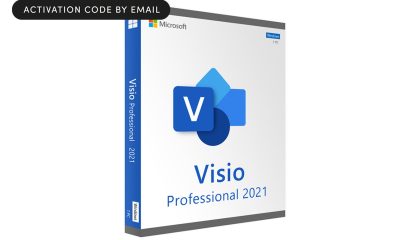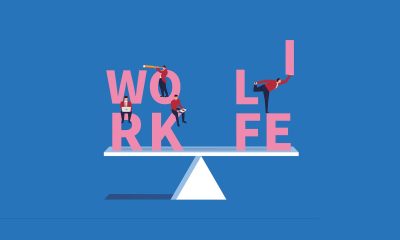Personal Finance
Top Reasons to Roll Over Your 401(k) to an IRA

When you leave a job, the vested balance in your 401(K) is yours to control. You can opt to cash it out, roll it over to the 401(k) set up by your current employer or roll it over to a traditional or Roth IRA.
In this article, we’ll discuss the reasons why you might want to roll your 401(k) over to an IRA. We’ll also go through the different types of rollovers and answer a few common questions about 401(k)s.
If you currently have a 401k but are looking for different ways to extend your portfolio, rolling over to a Gold IRA is one of the best ways to do so!
Oxford Gold Group can help protect your assets in tax-advantaged accounts by providing metal IRA. Why wait? Select your state to get started today!
Invest in Gold
IRA vs. 401(k)
An IRA and a 401(k) are both tax-advantaged accounts for your retirement assets. But an IRA is an individualized retirement account established by an individual, while a 401(k) account is established by an employer for an employee as part of a benefits package.
401(k)s have some advantages over IRAs. Some of the key benefits they offer include:
-
Higher annual contribution limits
-
Better protection from creditors
-
Employer match options on contributions
-
The ability to take out a loan from your account as long as you pay it back within five years and pay interest.
But 401(k) accounts have some drawbacks that may make an IRA a more appealing choice for some investors. We’ll discuss this more below.
What are the benefits of rolling over a 401(k)?
Rolling over your 401(k) to an IRA makes the most sense in some situations. Below are the key benefits of rolling your 401(k) funds over to an IRA so you can decide if this may be a good option for you.
More investment options
401(k) account terms are set by the employer and the financial institution they select. To keep this benefit affordable for the employer, they often set up the terms for 401(k)s in their favor. For example, some businesses that offer 401(k) accounts pay some or all set-up and administration fees, so they would select plans that have lower fees. As a result, the options to diversify your portfolio are generally limited to a handful of mutual funds with defined risk and growth potential. It’s up to you how you balance your funds between the mutual fund options and other potential investments. However, often the provider will only allow a change in selection a limited number of times per year.
An IRA, however, is individually managed, which means you can choose from a variety of investment options, including:
-
Individual stocks
-
Bonds
-
Exchange-traded funds, which are traded on the stock exchange like a traditional stock
-
Cryptocurrency
-
Gold and other precious metals — see our list of best gold IRA companies to learn more.
You’ll also have more flexibility in how often you can adjust your investments each year. With access to more high-risk, high-reward investment options, you’ll have more choices on how to grow your retirement savings with an IRA account.
Lower costs
IRAs often have lower account and investment-related fees than 401(k)s.
On average, you can expect to pay an annual fee of 1%-3% of the total 401(k) account value plus administrative and management fees each year. If you’ve left your employer — depending on the terms of your 401(k) — they may stop paying some fees on the account, which you would need to take over to keep the account open.
Since IRAs offer more investment choices, you can choose investment options with lower fees. You can also choose to open an IRA with a robo-advisor rather than a human financial advisor. These advisors manage your investments based on algorithms and come with much lower fees — often just 0.2%-0.5% annually — than a human advisor.
Lower costs are important not just to save you money in the present but also for future growth since retirement accounts are compounded investments. This means that your earnings are automatically reinvested into your investments. Money lost to fees means less money to invest, which means lower earnings over the life of the account.
Be aware, however, that you may actually pay more in fees with an IRA if you choose to invest in funds that have higher fees than the ones you’ve previously invested in through your 401(k).
Easier to contact your financial advisor
Information related to 401(k) accounts is usually shared via company email; if you aren’t at the company any longer, you may not get the most up-to-date information. Also, if your previous employer is acquired by another company or changes the company that manages your 401(k), it may impact your 401(k) investment options or fees. Or you may temporarily lose access to your account until the situation is resolved.
With an IRA, however, you are only a phone call or email away from your financial advisor.
Option for 401(k)-to-Roth IRA rollover
With a 401(k) or a traditional IRA, you make pre-tax contributions to your account, which means you don’t pay taxes on the amount you contribute. Your earnings accumulate tax-free, but you’ll pay taxes when you withdraw money from the account, whether after retirement or before.
With a Roth IRA, however, you make contributions after taxes, and all withdrawals are tax-free. This is beneficial if you predict you’ll be in a higher tax bracket in retirement than you are currently. You also don’t have to take required minimum distributions (RMDs), allowing your money to grow tax-free if you don’t need it in retirement.
Converting to a Roth IRA might make financial sense, especially in a bear market, but the process can be complicated. Because Roth IRA contributions are made after you pay taxes, you’ll need to pay taxes on the amount rolled over, which would require a significant payment for the rollover amount in the year you file taxes. To ensure you understand the financial ramifications of setting up a Roth IRA now and for the future, it’s a good idea to speak with a tax advisor when considering this type of rollover.
Incentives
Unlike 401(k)s, which are only offered by employers to employees, IRAs are available to anyone. Since IRAs are marketed to everyone, financial institutions may lure you to invest with them by offering incentives to make them look more attractive. Incentives can include cash, additional investment opportunities, free stock trades and more.
But don’t choose to roll over your entire 401(k) to an IRA solely for one-time incentives — think of them more as a nice bonus rather than a reason to roll over.
Cash distribution options
An IRA allows more cash distribution options than a 401(k). Before age 59 ½, you can withdraw your contributions — but not earnings — penalty-free at any time. However, you’ll still have to pay taxes on the amount you withdraw. You can also access your contributions and earnings through penalty-free withdrawals to pay for a first-time home loan, medical fees or college expenses.
If your funds are in a 401(k), you’ll pay taxes and withdrawal penalties on these cash distributions if you make them before you turn 59 ½.
Transparent plan rules
Employers set up 401(k) accounts, and it’s the employer who determines the fees and regulations involved. As a result, rules may not be entirely transparent. You’ll have to read your 401(k) statements carefully to understand the fees involved in investing. And don’t assume all 401(k)s are the same when it comes to rules and fees.
By contrast, IRAs are standardized by the IRS, so the regulations and fees are typically more transparent. This makes them easier to navigate, especially if you aren’t a financial expert.
Advantages for planning estates
When you die, a 401(k) is typically paid out in a lump sum to your beneficiary, creating a tax penalty for them. An IRA has several inheritance payout options that can protect your heirs from potentially burdensome tax bills.
If your spouse is your IRA’s beneficiary, they can take the lump sum and pay taxes on it, or they can do any of the following to avoid the tax liability:
-
Roll over your IRA to their own pre-existing IRA
-
Establish a separate inherited IRA account
-
Continue receiving the RMDs without paying taxes (if your death occurs after your RMDs have kicked in)
Non-spouse beneficiaries can take the lump sum and pay taxes on it or set up a new inherited IRA account to avoid paying taxes.
Regardless, your beneficiary cannot make any contributions to their inherited account and will need to withdraw the complete balance of the account within 10 years of your death.
Rolling over from a 401(k) to a Gold IRA is made easy with Oxford Gold Group
The presence of gold in your retirement investments will prove fruitful in times of economic crisis and diversify your retirement savings. Click below to get started today!
Invest in Gold
Types of Rollovers
There are two types of rollovers that your current provider may offer. When initiating the rollover process, it’s best to ask for a direct rollover from your current provider to your new provider rather than an indirect rollover.
Direct rollover
In a direct rollover — a trustee-to-trustee or in-kind rollover — your current provider sends the rollover funds to your new provider via check or electronic transfer. In some cases, your current provider may make a check out to your new provider for the full amount of your rollover but send the check to you. Then you send that check to your new provider.
This is considered the best rollover type because it has the fewest steps. This is important as there is a 60-day deadline to deposit your funds in your new account once you receive your distribution. It also doesn’t involve your current provider withholding any potential tax liabilities.
Indirect rollover
If your current provider doesn’t offer a direct rollover, you’ll need to do an indirect rollover. In this rollover, your current provider will send you a check made out to you for the amount you wish to roll over, minus 20%, which they will hold for potential tax liabilities in case you don’t complete the rollover within 60 days.
Once you receive the check, you’ll need to deposit it in your bank account and then write a check out to your new provider for the entire amount you wish to roll over. Your new provider will deposit that amount in your new account. Once you file your federal tax return for the year in which the rollover occurred — assuming you haven’t made any taxable withdrawals — your previous provider will release the funds they initially withheld.
With an indirect rollover, there are more steps. This increases the potential for delayed or lost mail and bank holds on large transactions, which can make meeting the 60-day time limit more challenging.
Can you roll an IRA into a 401(k)?
Yes, you can roll an IRA into a 401(k) if your 401(k) allows it. This is called a reverse rollover.
But rolling an IRA into a 401(k) is complicated — you can only roll over IRA contributions that were made with pre-tax dollars. For any year in which you made pre-tax contributions, you should have an IRS Form 8606 that lists the specific pre-tax amount you contributed.
Talking to a financial advisor or your IRA and 401(k) administrators is strongly encouraged to avoid potentially costly mistakes.
Should you roll over your 401(k) at a new job?
You don’t have to roll over your 401(k) from your previous employer to your new employer plan. But in some situations, like if your balance is less than $5,000, your earlier employer may require you to roll over your 401(k) when you leave.
You may want to rollover your 401(k) when you change jobs if:
-
You would like access to a different range of investment options
-
You want to consolidate all your retirement savings into one place to make them easier to track
-
Your 401(k) from your previous employer has larger fees than the account you want to roll over to
Rollover your 401(k) the right way
Rolling over your 401(k) to an IRA has several benefits that can improve your earning potential, such as more investment options, lower costs, easier contact with your financial advisor to make investment changes and the ability to roll over to a Roth IRA. Other benefits include incentives, cash distribution options, transparent plan rules and estate planning advantages.
However, you’ll lose access to 401(k) perks, like your employer’s matching contributions, the ability to take out a loan against your balance and better protection from creditors. If you have employer stock options in your 401(k), the pros and cons become even more complicated. There is no one-size-fits-all investment option, so speak with a financial planner before you start the rollover process.
Retire with Money
Retire With Money brings the latest retirement news, insights, and advice to your inbox. Jill Cornfield has covered retirement for more than 10 years.
Sign Up
© Copyright 2023 Money Group, LLC. All Rights Reserved.
This article originally appeared on Money.com and may contain affiliate links for which Money receives compensation. Opinions expressed in this article are the author’s alone, not those of a third-party entity, and have not been reviewed, approved, or otherwise endorsed. Offers may be subject to change without notice. For more information, read Money’s full disclaimer.
Read the full article here

-

 Passive Income7 days ago
Passive Income7 days agoThe One Microsoft Design Tool Business Owners Shouldn’t Miss
-

 Side Hustles5 days ago
Side Hustles5 days agoThe DOJ Reportedly Wants Google to Sell Its Chrome Browser
-

 Side Hustles5 days ago
Side Hustles5 days agoHow to Create a Unique Value Proposition (With Tips & Examples)
-

 Investing4 days ago
Investing4 days agoAre You Missing These Hidden Warning Signs When Hiring?
-

 Investing6 days ago
Investing6 days agoThis Founder Turned a Hangover Cure into Millions
-

 Investing7 days ago
Investing7 days agoYour Firsthand Experiences Shape the Way You Run Your Business — Here’s How Mine Shaped Me
-

 Investing4 days ago
Investing4 days agoGoogle faces call from DuckDuckGo for new EU probes into tech rule compliance By Reuters
-

 Make Money4 days ago
Make Money4 days ago7 Common Things You Should Never Buy New


















